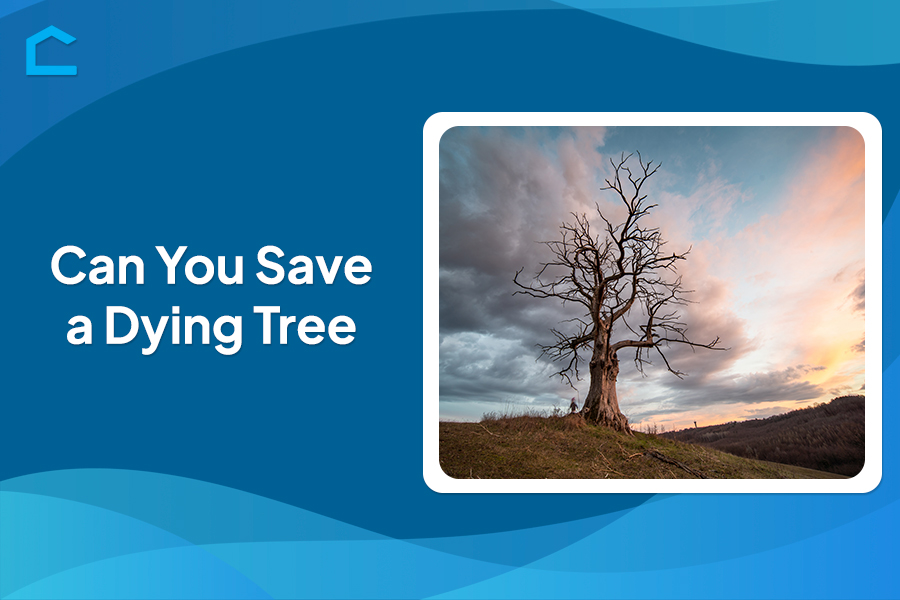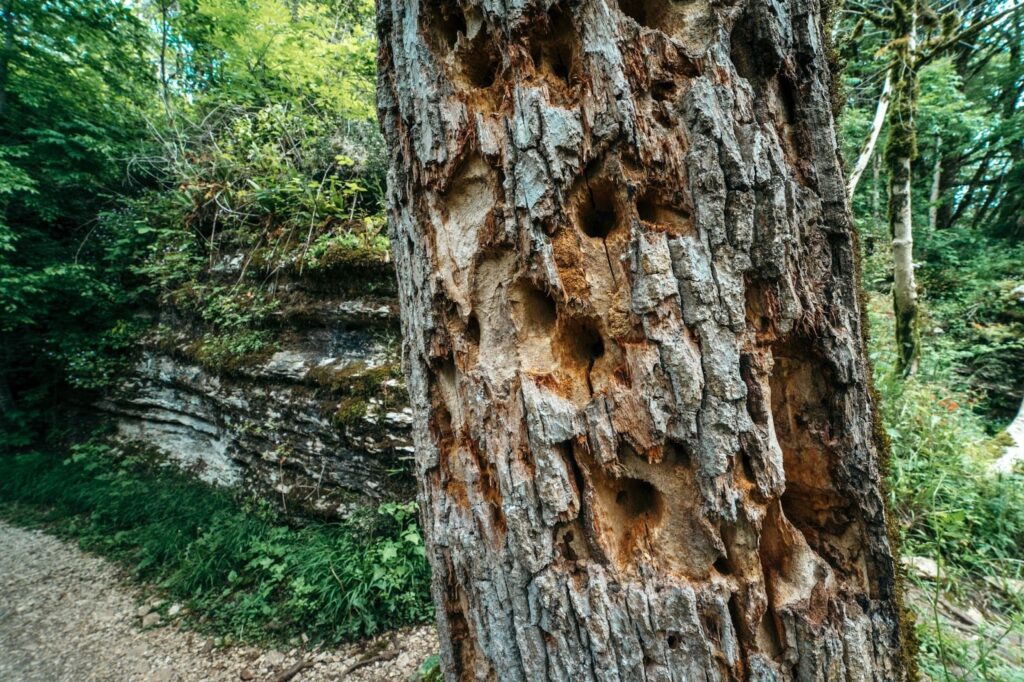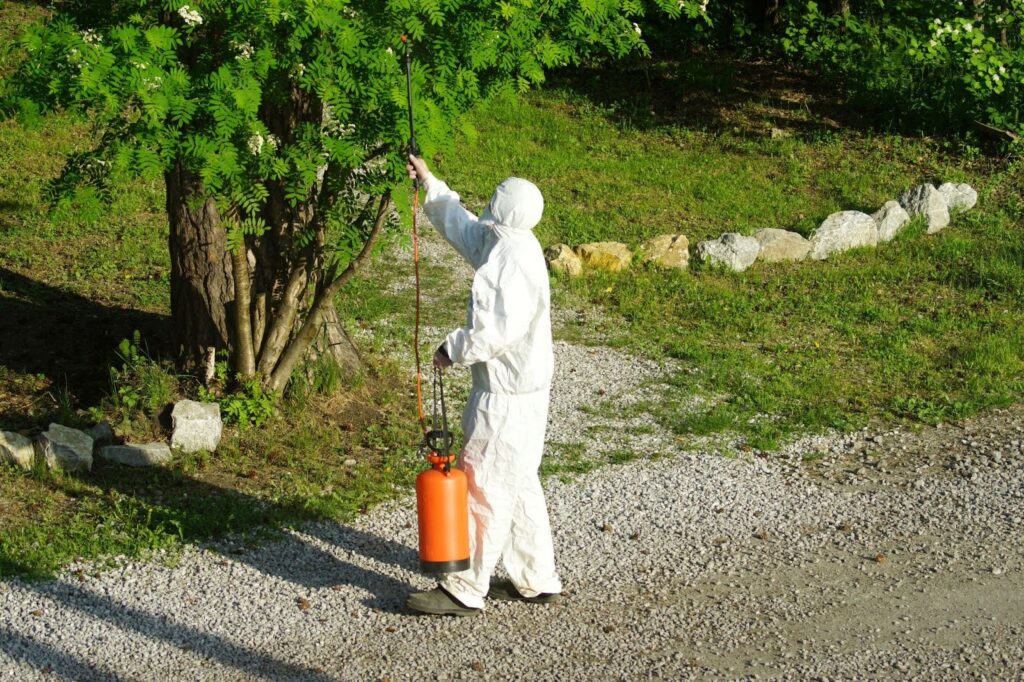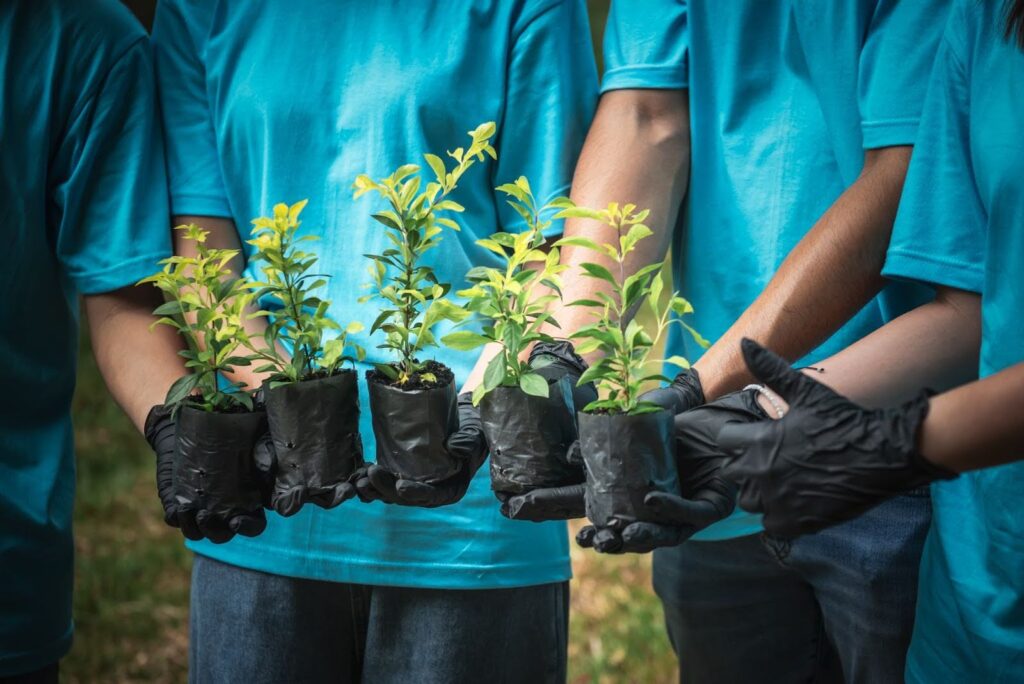Can You Save a Dying Tree?

In the heart of every yard, trees stand as silent guardians, contributing shade, beauty, and character to our landscapes. These majestic plants may have taken decades to reach their current stature. Yet they can suddenly show signs of distress – leaves yellowing out of season, bark peeling unexpectedly, or branches becoming increasingly brittle.
For homeowners and garden enthusiasts, watching a beloved tree decline can be both emotionally and financially concerning. But can you save a dying tree? Understanding tree health is complex, as multiple factors can contribute to their deterioration. Tree decline stems from diverse causes, from environmental stress to diseases and pests.
While some signs of stress may be obvious, others require a trained eye to detect and diagnose accurately. This guide covers key indicators of tree health, common causes of decline, and intervention methods for homeowners and professionals. By understanding these fundamental aspects, you’ll be better equipped to assess your tree’s condition and make informed decisions about its care.

Can You Save a Dying Tree?
Yes, it is possible to save a dying tree depending on the severity of its condition and the causes of its decline. Early detection of symptoms and addressing issues such as environmental stress, pests, or diseases can increase the chances of reviving a tree. Proper care and timely interventions are crucial.
Identifying the signs of a dying tree
Yellow or browning leaves during the growing season, along with premature leaf drop, often signal underlying health issues. Wilting, unusual spots, and discoloration are signs that your tree may be struggling. These symptoms often point to disease, pest infestation, or root problems.
Dead or dying branches, especially on one side of the tree, indicate serious concerns that need attention. Fresh cracks in the bark, fungal growth near the base, or trunk damage expose the tree to further decay, while the lack of new spring growth often confirms the severity of the decline.
Determining the cause of decline
Signs of pest and disease problems
Inspect your tree for tiny holes in the bark, sawdust-like material, or unusual growths – these often indicate insect problems. Watch for discolored or spotted leaves, premature leaf drop, or fungal growth on branches, as these suggest disease invasion.
Regular monitoring of these signs can help catch issues early. Take photos to track changes over time and consider consulting an arborist for accurate identification of specific pests or diseases affecting your tree.
Environmental stress factors
Poor soil conditions often manifest as yellowing leaves, stunted growth, or a thinning canopy. Look for signs of drought stress like wilting, curling leaves, or premature leaf drop. Overwatering typically causes root rot and fungal growth at the tree’s base.
Test soil drainage and moisture levels around your tree. Note any recent changes in the surrounding landscape that might affect water availability or soil quality, such as new construction or changes in drainage patterns.
Physical damage assessment
Storm damage appears as split branches, torn bark, or exposed roots. Examine pruning cuts for proper healing – ragged or improperly angled cuts make trees vulnerable. Check for signs of mechanical damage from lawn equipment or construction.
Document any visible wounds and monitor them for signs of decay or insect invasion. Look for cracks or splits in major branches or the trunk, as these can indicate structural weakness requiring immediate attention.
Steps to save a dying tree
Proper watering
Create a consistent watering schedule, ensuring the soil stays moist but not waterlogged. For mature trees, water deeply at the drip line about once a week, adjusting frequency based on rainfall and soil conditions.
Test soil moisture by inserting a screwdriver – if it meets resistance, more water is needed. During drought periods, increase watering frequency while being careful not to create standing water around the roots.
Fertilization
Select a slow-release, balanced fertilizer appropriate for your tree species and apply it during the growing season. Follow package instructions carefully, as over-fertilization can cause more harm than good.
Water thoroughly after applying fertilizer to help nutrients reach the root zone. In severe cases, consider a professional soil test to determine specific nutrient deficiencies.
Pruning dead or damaged branches
Remove diseased, dead, or broken branches using clean, sharp tools and proper cutting techniques. Make cuts at the branch collar to promote natural healing and prevent disease entry.
Limit pruning to no more than 25% of live branches in one season to avoid stressing the tree further. Clean tools between cuts when dealing with diseased branches to prevent spread.
Pest and disease treatment
Identify specific pests or diseases affecting your tree and apply appropriate treatments. Use targeted pesticides or fungicides as needed, following label instructions carefully.
Monitor the tree’s response to treatment and adjust methods if necessary. Consider consulting an arborist for severe infestations or complex disease issues.

Soil aeration and mulching
Improving soil conditions
Create small holes around the root zone using an aerating tool to improve oxygen flow. Work carefully to avoid damaging roots, spacing holes about 12-18 inches apart.
Focus aeration efforts on compacted areas and those showing signs of poor drainage. Timing is crucial – aerate when soil is moist but not wet to prevent further compaction.
Proper mulching practices
Apply a 2-4 inch layer of organic mulch around the tree, extending from the drip line inward. Keep mulch at least six inches away from the trunk to prevent rot and pest problems.
Choose appropriate mulch materials like wood chips or bark, avoiding fresh grass clippings or leaves. Refresh mulch annually, removing old layers if they become compacted.
When to consult an arborist
Severe symptoms like multiple dying branches, extensive leaf loss, or large areas of falling bark signal the need for professional help. If you notice mushrooms growing at the tree’s base, sudden leaning, or signs of internal decay like hollow spots and deep cracks, these are structural issues and require immediate expert evaluation.
Consider calling a certified arborist if treatments you’ve tried aren’t showing improvement or if you’re unsure about the underlying cause of decline. Professional arborists have the tools and expertise for advanced treatments like deep root fertilization, soil amendments, and targeted pest management. They can assess tree health, create customized treatment plans, and determine if the tree can be saved or poses a safety risk.
How to Save a Dying Tree Sapling
Young trees are especially vulnerable to environmental stress, but quick action can often save them. Check for common issues like improper planting depth, root binding, competing weeds, or soil moisture problems. Adjust the planting depth if needed, gently loosen bound roots, and establish a consistent watering schedule.
If the sapling was recently planted, ensure it has enough space for root growth and proper depth. Protect the young tree by installing a trunk guard and maintaining a weed-free zone around the base. Apply a thin layer of mulch to retain moisture and regulate soil temperature, keeping it away from the trunk.
Consider using a balanced, diluted fertilizer during the growing season for added nutrients. Provide temporary shade during extreme heat spells, especially in the sapling’s first summer. Monitor the tree’s response to care and adjust treatments as needed.

Conclusion
Can you save a dying tree? In caring for a dying tree, success lies in swift observation and appropriate action. Whether dealing with a mature tree or a young sapling, early detection of problems significantly increases the chances of recovery. While homeowners can address many common issues through proper watering, mulching, and basic maintenance, some situations demand professional expertise.
Regular monitoring of your trees for signs of stress or decline can prevent minor issues from becoming major problems. Remember that each tree’s situation is unique, and what works for one may not work for another. If you’re uncertain about your tree’s condition or the best course of action, don’t hesitate to consult a certified arborist.
With proper care, attention, and timely intervention, many trees can recover from decline and continue to enhance our landscapes for years to come.
